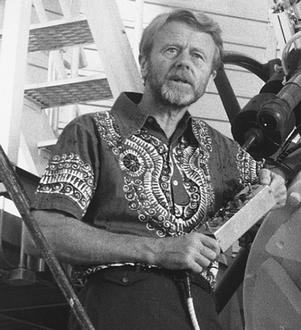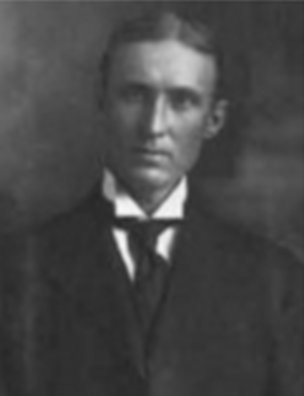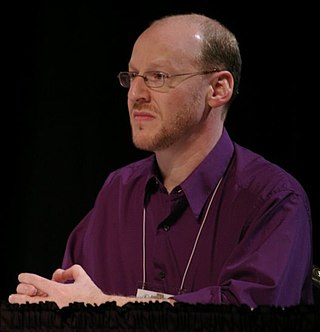
A constellation is an area on the celestial sphere in which a group of visible stars forms a perceived pattern or outline, typically representing an animal, mythological subject, or inanimate object.

The history of astronomy focuses on the contributions civilizations have made to further their understanding of the universe beyond earth's atmosphere. Astronomy is one of the oldest natural sciences, achieving a high level of success in the second half of the first millennium. Astronomy has origins in the religious, mythological, cosmological, calendrical, and astrological beliefs and practices of prehistory. Early astronomical records date back to the Babylonians around 1000 BCE. There is also astronomical evidence of interest from early Chinese, Central American and North European cultures.

Johannes Kepler was a German astronomer, mathematician, astrologer, natural philosopher and writer on music. He is a key figure in the 17th-century Scientific Revolution, best known for his laws of planetary motion, and his books Astronomia nova, Harmonice Mundi, and Epitome Astronomiae Copernicanae, influencing among others Isaac Newton, providing one of the foundations for his theory of universal gravitation. The variety and impact of his work made Kepler one of the founders and fathers of modern astronomy, the scientific method, natural and modern science. He has been described as the "father of science fiction" for his novel Somnium.

Taurus is one of the constellations of the zodiac and is located in the northern celestial hemisphere. Taurus is a large and prominent constellation in the Northern Hemisphere's winter sky. It is one of the oldest constellations, dating back to the Early Bronze Age at least, when it marked the location of the Sun during the spring equinox. Its importance to the agricultural calendar influenced various bull figures in the mythologies of Ancient Sumer, Akkad, Assyria, Babylon, Egypt, Greece, and Rome. Its old astronomical symbol is (♉︎), which resembles a bull's head.

The zodiac is a belt-shaped region of the sky that extends approximately 8° north and south of the ecliptic, the apparent path of the Sun across the celestial sphere over the course of the year. Also within this zodiac belt appear the Moon and the brightest planets, along their orbital planes. The zodiac is divided along the ecliptic into 12 equal parts ("signs"), each occupying 30° of celestial longitude. These signs roughly correspond to the astronomical constellations with the following modern names: Aries, Taurus, Gemini, Cancer, Leo, Virgo, Libra, Scorpio, Sagittarius, Capricorn, Aquarius, and Pisces.

Astronomy is a natural science that studies celestial objects and the phenomena that occur in the cosmos. It uses mathematics, physics, and chemistry in order to explain their origin and their overall evolution. Objects of interest include planets, moons, stars, nebulae, galaxies, meteoroids, asteroids, and comets. Relevant phenomena include supernova explosions, gamma ray bursts, quasars, blazars, pulsars, and cosmic microwave background radiation. More generally, astronomy studies everything that originates beyond Earth's atmosphere. Cosmology is a branch of astronomy that studies the universe as a whole.

Henry Norris Russell ForMemRS HFRSE FRAS was an American astronomer who, along with Ejnar Hertzsprung, developed the Hertzsprung–Russell diagram (1910). In 1923, working with Frederick Saunders, he developed Russell–Saunders coupling, which is also known as LS coupling.

Aryabhata or Aryabhata I was the first of the major mathematician-astronomers from the classical age of Indian mathematics and Indian astronomy. His works include the Āryabhaṭīya and the Arya-siddhanta.

Nicolaus Copernicus was a Renaissance polymath, active as a mathematician, astronomer, and Catholic canon, who formulated a model of the universe that placed the Sun rather than Earth at its center. In all likelihood, Copernicus developed his model independently of Aristarchus of Samos, an ancient Greek astronomer who had formulated such a model some eighteen centuries earlier.

Anton M.J. "Tom" Gehrels was a Dutch–American astronomer, Professor of Planetary Sciences, and Astronomer at the University of Arizona, Tucson.

Hendrik Christoffel "Henk" van de Hulst was a Dutch astronomer.

Robert Jastrow was an American astronomer and planetary physicist. He was a NASA scientist, populist author and futurist.

David Clifford Jewitt is a British-American astronomer who studies the Solar System, especially its minor bodies. He is based at the University of California, Los Angeles, where he is a Member of the Institute for Geophysics and Planetary Physics, the Director of the Institute for Planets and Exoplanets, Professor of Astronomy in the Department of Physics and Astronomy and Professor of Astronomy in the Department of Earth, Planetary and Space Sciences. He is best known for being the first person to discover a body beyond Pluto and Charon in the Kuiper belt.

Carl Otto Lampland was an American astronomer. He was involved with both of the Lowell Observatory solar system projects, observations of the planet Mars and the search for Planet X.

Philip Cary Plait, also known as The Bad Astronomer, is an American astronomer, skeptic, and popular science blogger. Plait has worked as part of the Hubble Space Telescope team, images and spectra of astronomical objects, as well as engaging in public outreach advocacy for NASA missions. He has written three books, Bad Astronomy, Death from the Skies, and Under Alien Skies. He has also appeared in several science documentaries, including How the Universe Works on the Discovery Channel. From August 2008 through 2009, he served as president of the James Randi Educational Foundation. Additionally, he wrote and hosted episodes of Crash Course Astronomy, which aired its last episode in 2016.

George Saliba is an American historian who is Professor of Arabic and Islamic Science at the Department of Middle Eastern, South Asian, and African Studies, Columbia University, New York, where he has been since 1979. Saliba is currently the founding director of the Farouk Jabre Center for Arabic & Islamic Science & Philosophy and the Jabre-Khwarizmi Chair in the History Department.

Duncan Alasdair Lunan, born October 1945, is a Scottish author with emphasis on astronomy, spaceflight and science fiction, undertaking a wide range of writing and speaking on those and other topics as a researcher, tutor, critic, editor, lecturer and broadcaster. He is known for his science writings as well as for his work on the Sighthill stone circle.

Astronomische Nachrichten, one of the first international journals in the field of astronomy, was established in 1821 by the German astronomer Heinrich Christian Schumacher. It claims to be the oldest astronomical journal in the world that is still being published. The publication today specializes in articles on solar physics, extragalactic astronomy, cosmology, geophysics, and instrumentation for these fields. All articles are subject to peer review.

Shams al-Din Muhammad b. Ahmad al-Khafri al-Kashi, known as Khafri, was an Iranian religious scholar and astronomer at the beginning of the Safavid dynasty. Before the arrival of Sheikh Baha'i in Iran, he was appointed as the major Shia jurist in the Safavid court. He was born in the city of Ḵafr, south east of Firuzābād in the region of Fārs. His exact date of birth is unknown but historical accounts estimate the date of his birth to be around the 1480s. He wrote on philosophy, religion, and astronomy, with the latter including a commentary on al-Tusi and critiques of al-Shirazi. Al-Khafri wrote works on theology and astronomy, indicating that Islamic scholars in his time and place saw no contradictions between Islam and science.
This is a list of encyclopedias and encyclopedic/biographical dictionaries published on the subject of astronomy and astronomers in any language. Entries are in the English language except where noted.


















